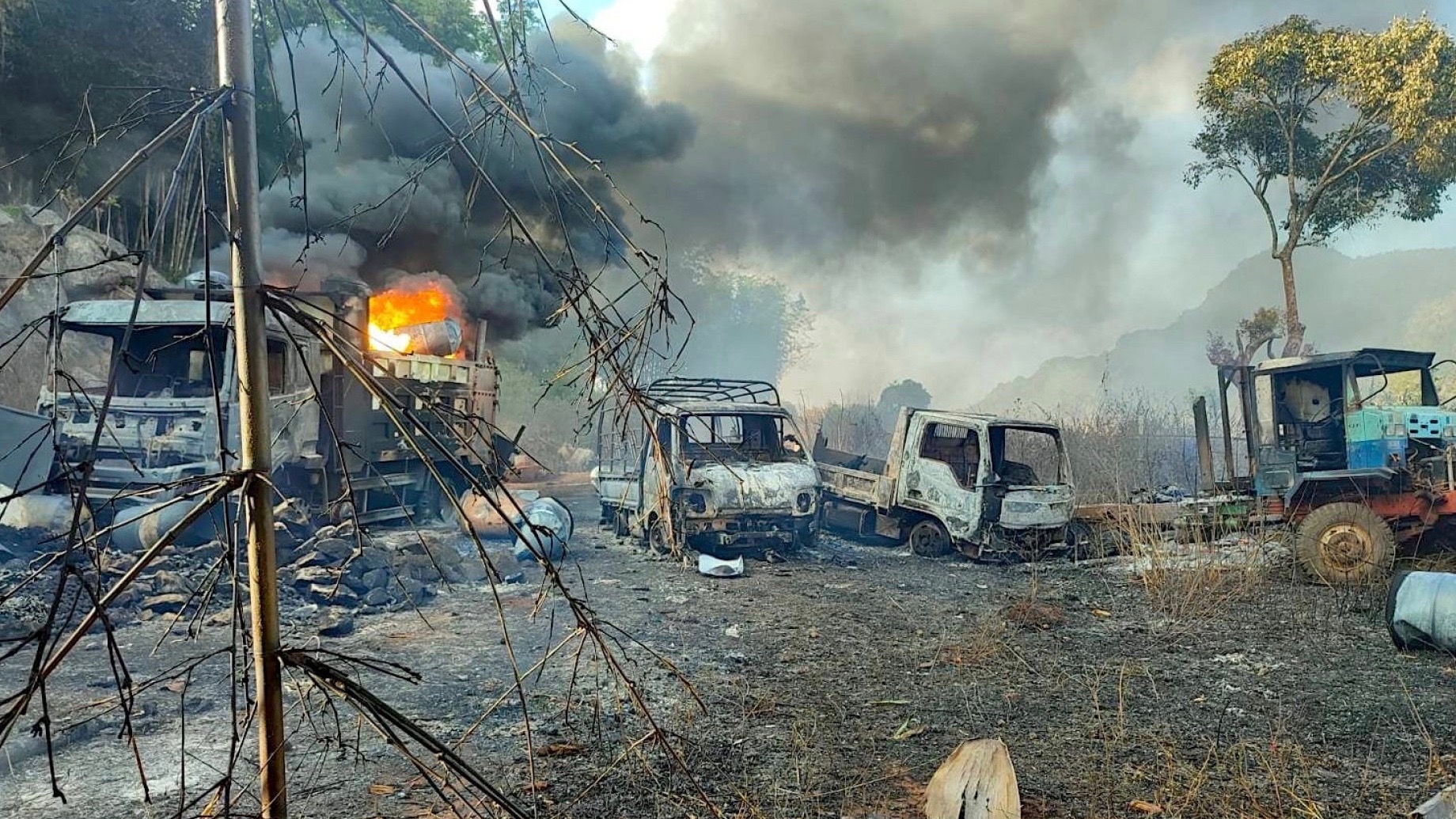Despite repeated calls by international human rights organizations to prevent the ongoing atrocities and repression in Myanmar, the waves of violence have persisted leading to large-scale displacement of people. In the latest cycle of violence, the Myanmar military (Tatmadaw) torched over 100 buildings in the Chin State town of Thantlang during three days of fighting in the restive region.
As per reports, the junta forces were ambushed by anti-coup dissenters, the defense volunteers, leading to seven casualties among the junta forces. The junta responded with heavy artillery fire which damaged several buildings and triggered a series of violent clashes in the region earlier this month. On February 6, at least eight civilians including three minors were injured in violent clashes in Tin Thar village of Kalay township. In another clash in Rakhine’s Maungdaw township, two civilians lost their lives after being caught in heavy firing between armed groups and the junta forces on February 7.
The Myanmar military toppled the civilian government in the country in a coup last year on February 1. Since then, the junta government has reportedly arrested 11,500 people, including civilians, trade unionists, journalists and activists. At least 320,000 people have been internally displaced within one year.
Human rights groups note that the junta forces have already carried out 64 death penalties. Over 1,500 civilians including at least 100 children, between 14 months and 17 in age, have been killed.
Natchaung, a village on the Kalay-Gangaw highway, has become the epicenter of violence in the region. Locals are facing the brunt of hostilities between the military and the defense volunteers. The military has reportedly launched indiscriminate air strikes killing several civilians in the southeast.
In Kalay town, at least 2,000 households fled from their villages after they came under attack from the junta forces. The streets of Thantlang in western Myanmar also wear a deserted look after over 8,000 residents fled their homes when violence escalated in September last year.
Meanwhile, there are calls for re-imposing tough international sanctions on the Myanmar military. Activist groups like Justice for Myanmar have revealed that despite the sanctions, the “United States has imported 1,565 metric tonnes of teak from Myanmar” following the military coup.
The military has also ramped up its efforts to cement its authoritarian control of online spaces. Norway’s Telenor Myanmar was sold to M1 Group, a shareholder of Irrawaddy Green Towers which leases phone towers to Mytel that is part-owned by the military. Later, amendments were brought in the Broadcast Law that fortified censorship controls over online media. Activists and lawyers fear that these measures will deepen surveillance in the country.
On the first anniversary of the military coup, several international groups including Amnesty International blamed the regime forces for blocking life-saving aid and carrying out a bloody campaign against activists and journalists. Many of them have been detained and killed in custody.
“Too many governments continue turning a blind eye to all these atrocities, as they did following the gross violations of human rights against the Rohingya people,” Amnesty said in a statement.
Amid the emerging humanitarian crisis and in the absence of democratic authority, issues such as corruption, human trafficking, money laundering, drugs, and other organized crime have seen a spike. Some reports estimate that if the conflict in Myanmar continues in its current trajectory, “more than half of the country’s townships could fall under the control of local defense forces or ethnic armed groups, the latter becoming virtually autonomous.”





